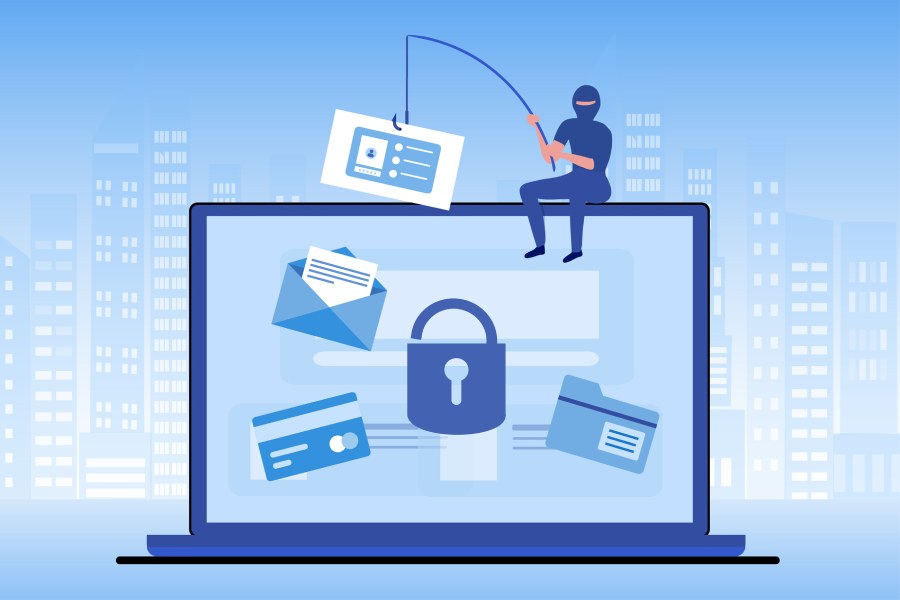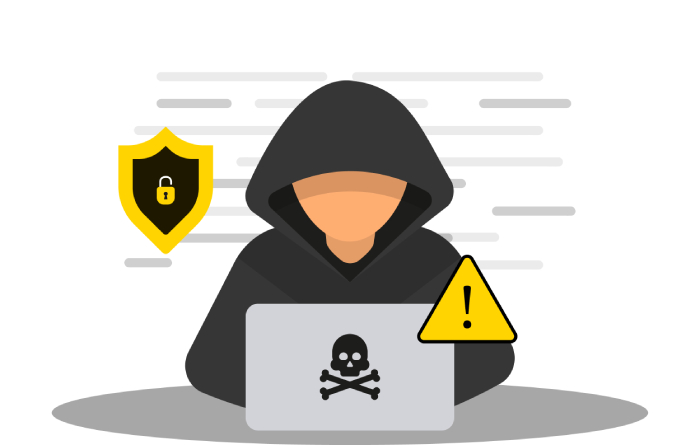Phishing has long been one of the most common types of cybersecurity threats for enterprises. Even though most enterprises operating in the digital mode deploy anti-phishing tools, threat actors have developed a new invasive method of attack, called HTML smuggling. Regardless of the size and industry of your enterprise, it makes sense to draw a line of defense against phishing emails. HTML smuggling serves as an attack mechanism that provides a channel to gain initial access to the system. Subsequently, the attackers can deploy other attacks, such as banking malware, ransomware payloads, and remote administration Trojans.
HTML Smuggling: The New Mode of Phishing Attack
While most organizations have already been collaborating with managed service providers for email phishing protection, HTML smuggling might appear to be an innovative threat variant. Here, the first-stage droppers are often smuggled by the attackers through malicious scripts. These scripts generally remain encoded within web pages, specially designed HTML attachments, or even a victim system. The attackers, in this case, do not exploit the vulnerabilities in the web browsers. Instead, they take advantage of the primary features of JavaScript and HTML5.
It implies that the malicious actors need not send an HTTP request and fetch the resources on the browsers. At the same time, they can evade the defense mechanisms set up for perimeter security. Subsequently, they deploy the HTTP droppers to take the primary malware and execute attacks on the compromised systems. Hence, it is essential to have the best phishing protection safeguards for your organization.
How Does it Work?
HTML smuggling generally uses JavaScript and HTML5 for concealing malicious payloads on an HTML webpage or attachments in the form of encoded strings. These strings get decoded when a victim clicks on a link or opens the attachment. For instance, an HTML attachment might contain a link that looks harmless, leading to a known website. Therefore, the victim would not consider it to be malicious. However, on clicking on it, the included encoded or encrypted string would get decoded. It gets converted into a malicious attachment that the user eventually downloads.
Given that initially, the malicious payload remains encoded, security software considers it to be harmless. Even though you may be using anti-phishing solutions, the tool would not think it to be malicious. Moreover, the payload is assembled by JavaScript on the target system. This situation empowers it to bypass all security defenses and firewalls supposed to detect the malicious file. On checking out more phishing email examples, you can understand the potential of this threat.
The Line of Defense Against HTML Smuggling
According to Microsoft, admins need to deploy behavior rules and scan the common attributes of HTML smuggling. They include:
- ZIP files in attachments that contain JavaScript
- Password-protected attachments
- Suspicious script codes in HTML files
You might be wondering how to stop phishing emails carrying such threats. While using an advanced anti-phishing solution should serve as a robust defense mechanism, you have other aspects to take care of. Admins need to audit activity or block the malicious ones at the endpoints to prevent HTML smuggling. You can apply the following protective methods:
- Blocking VBScript or JavaScript so that malicious actors cannot launch executable content through downloads
- Stopping the execution of scripts that are potentially obfuscated
- Preventing executable files from running, so long as they do not fulfill trusted criteria, age, or prevalence
- Besides, the users need to associate .jse and .js files with a text editor, such as Notepad, to prevent JavaScript codes from automatically being executed.
The best defense against such cyberattacks is to provide your employees with adequate training and awareness. They should refrain from opening files that are downloaded through links and attachments in emails. Whenever you encounter any such email, you need to be cautious and check them thoroughly before opening any files or links.
Moreover, if you find any downloaded file or attachment that ends with the ‘.js’ extension, make sure not to open it. They will get deleted from the system automatically. It would help if you had anti-malware solutions in your system in the first place. Often, Windows disables the default feature that allows users to check the file extension. In many cases, the extensions are not visible. Therefore, enterprises need to enable the feature for viewing the extension of files. This action will prevent you from opening malicious files altogether.
Why is it Crucial for Cybersecurity Professionals to Take a Guard?
HTML smuggling, which primarily targets victims through emails, has been trying to infiltrate mainly organizations dealing with banking activities. This attack vector has emerged recently, and Microsoft considers it a highly evasive technique to deliver malware. It exploits the intrinsic features of JavaScript and HTML5 and injects remote access Trojans, malware, and other payloads to execute the attack on the victims.
This type of cyberattack is increasing in the education and healthcare industries too. Malicious actors have the potential to carry out large-scale ransomware attacks deploying this mechanism, which is why organizations must have anti-ransomware solutions in place. Crucial industries such as banking and healthcare must especially take care to avoid such attacks. An important thing to note is that the threat actors can sell unauthorized access to the compromised organization. Therefore, once the system gives way, an organization might suffer a series of cyberattacks.
Final Words
Cyberattack mechanisms have been gaining sophistication with the evolution of technology. Banks, healthcare facilities, and educational institutions happen to be the primary targets of attacks through HTML smuggling. Considering the weightage of these attacks, organizations need to collaborate with cybersecurity specialists to maintain robust safeguards. It will be prudent to take the assistance of a managed service provider to have the best anti-phishing solution in place to keep your systems secure from threats such as phishing attacks.



